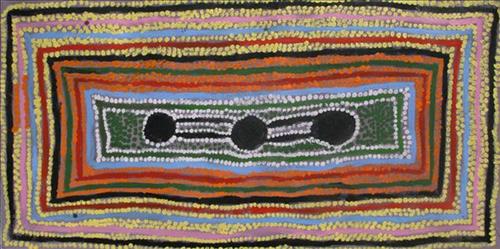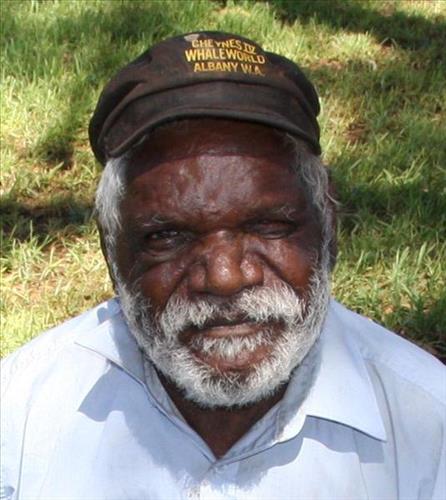11151030058
Wallanudja
This painting depicts the waterholes and tali (sandhills) in the artist’s country near Punmu. Rockholes, waterholes, soaks and springs were important sites for Martu people during pujiman (bush) days. The Martu lived very nomadically moving from water source to water source hunting and gathering bush tucker as they went. They would traverse very large distances visiting some areas in the dry and some in the wet season depending on the availability of water. As they travelled and hunted they would also burn areas of country creating a larger diversity of plant and animal life.




